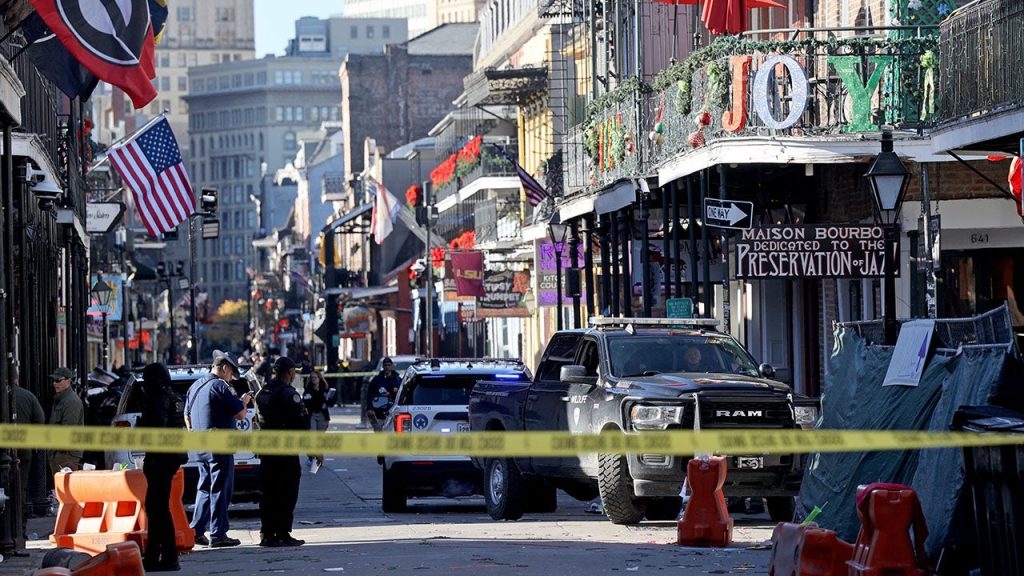The recent car ramming attack on New Year’s Eve revelers in New Orleans underscores the growing threat of vehicle-as-a-weapon attacks targeting vulnerable “soft targets.” This tragic incident, resulting in multiple fatalities and numerous injuries, echoes a disturbing trend of similar attacks worldwide. Just weeks prior, a suspected terrorist rammed a car into a Christmas market in Magdeburg, Germany, claiming five lives and injuring over 200. These events highlight the ease with which vehicles can be transformed into deadly weapons and the inherent vulnerability of large public gatherings. Former Department of Homeland Security officials have emphasized the need for increased vigilance and security measures to mitigate this evolving threat. The open nature of public spaces makes them attractive targets for those seeking to inflict maximum harm, necessitating a proactive approach to security planning and public awareness.
The New Orleans attack, currently under investigation by the FBI as an act of terrorism, involved a suspect identified as Shamsud Din Jabbar, who was killed in a shootout with police after plowing a truck into the crowd on Bourbon Street. Jabbar was armed with a Glock pistol and a stolen .308 rifle equipped with optics and a suppressor, suggesting a level of premeditation and intent. Law enforcement officials are pursuing leads on potentially four to five other suspects believed to be involved, and viable explosive devices were discovered at the scene, further escalating the gravity of the situation. The vehicle used in the attack was reportedly traced back to having crossed the U.S.-Mexico border in Texas the previous month, although the suspect was not the driver at the time of border crossing, indicating a transfer of ownership occurred at some point.
This incident adds to a growing list of car-ramming attacks in recent years. In 2017, New York City experienced its deadliest terror attack since 9/11 when Sayfullo Saipov drove a truck down a bike path in Lower Manhattan, killing eight and injuring many more. Saipov, inspired by ISIS, was later sentenced to multiple life terms. In 2021, Darrell Brooks Jr. drove his SUV through a Christmas parade in Waukesha, Wisconsin, killing six and injuring dozens. Brooks was subsequently sentenced to life in prison without parole. These attacks demonstrate the devastating consequences of vehicle-based terrorism and the wide range of motivations behind them.
Beyond the immediate impacts of casualties and injuries, these attacks leave lasting psychological scars on survivors and communities. The sudden and violent nature of such incidents can create a sense of fear and vulnerability, impacting public trust and social cohesion. The Waukesha Christmas parade attack, for instance, deeply traumatized the community, especially the families of the victims and those who witnessed the carnage. Similarly, the Nice, France, attack in 2016, where a truck plowed through a Bastille Day celebration, killing 86 and injuring hundreds, left a profound mark on the nation. The randomness and indiscriminate nature of these attacks amplify their psychological impact, leaving a lingering sense of insecurity.
The increasing frequency and global reach of car-ramming attacks necessitate a multi-faceted approach to prevention and mitigation. Enhanced security measures at public events, including vehicle barriers and increased police presence, can help deter potential attackers and minimize casualties. However, the sheer number of potential targets makes it impossible to secure every public space. Therefore, public awareness and vigilance are crucial. Citizens should be encouraged to report suspicious activity and remain alert to their surroundings, particularly during large gatherings. Furthermore, international cooperation and information sharing are essential to track potential threats and prevent cross-border movement of individuals or groups planning attacks.
Addressing the root causes of extremism and radicalization is also critical to long-term solutions. This involves tackling issues like social inequality, political instability, and online hate speech, which can contribute to the spread of extremist ideologies. Promoting interfaith dialogue and community resilience can also help counter the narratives of hate and division that fuel these attacks. The challenge of preventing car-ramming attacks requires a comprehensive strategy that combines physical security measures with efforts to address the underlying social and political factors that contribute to terrorism. Ultimately, fostering a culture of vigilance and resilience is crucial to safeguarding public spaces and protecting communities from this evolving threat.

